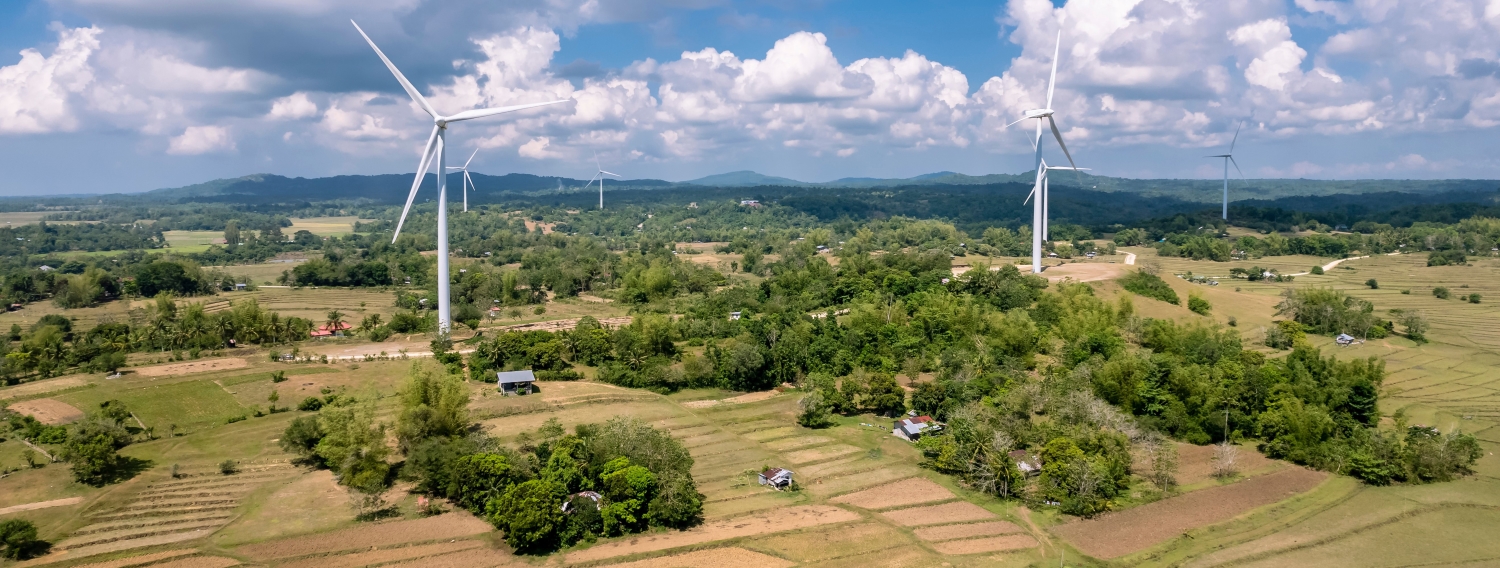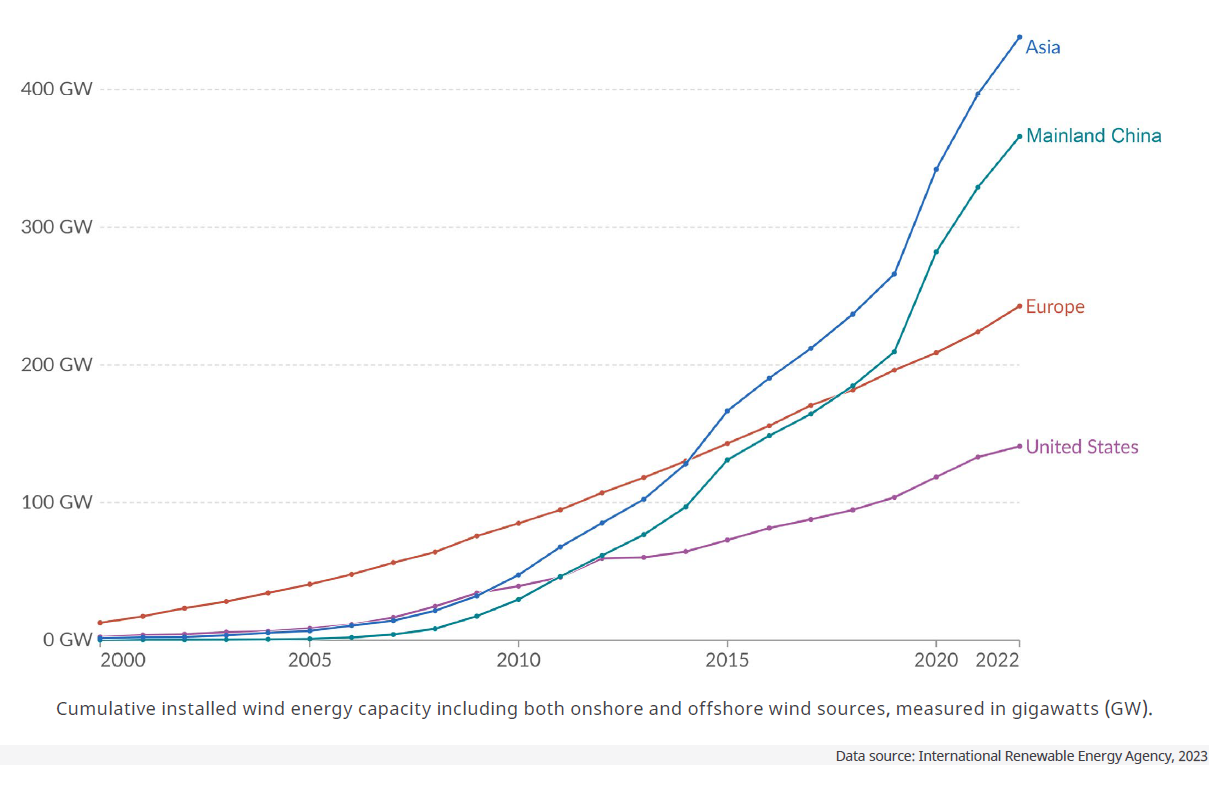
The states that comprise the Association of Southeast Asian Nations (ASEAN) are particularly susceptible to the effects of climate change, with 5 of the world’s 20 most at-risk countries located in the region. Consequently, ASEAN countries understand that renewable energy projects are key elements in their goal toward a carbon-neutral future by 2050. However, addressing risks associated with developing and operating these huge facilities is crucial in advancing their presence throughout the region.
ASEAN Green Pool an Important Boost to Renewable Energy in the Region
Environmental, social and corporate governance (ESG) factors have become increasingly important for ASEAN countries, and the organization has developed milestones to address those principles. The stated goal of the ASEAN State of Climate Change Report (ASCCR) is to achieve net zero carbon emissions by 2050. Phase II of the ASEAN Plan of Action for Energy Cooperation (APAEC) sets a target to increase the share of renewable energy in installed power capacity to 35% by 2025. As of 2021, 42 potential sites for solar farms and 20 potential sites for wind turbines have been mapped to support development throughout the region. At the same time, several countries are introducing new energy legislation and renewable policies to facilitate development of solar and wind farms.
There are already several operational solar and wind farms throughout the ASEAN region, including solar and wind in Thailand and Vietnam, solar in Malaysia and Singapore, and wind farms in Indonesia and the Philippines. These facilities tend to be large and somewhat complicated—for example, the Burgos Wind Farm in the Philippines covers more than 500 hectares of land with 50 large-scale, 3-megawatt wind turbines and a 115-kilovolt electrical transmission line.
Targeting Climate Change Consequences, Mitigation
The socioeconomic consequences of climate change in the region are very serious. According to a news release from ASEAN, unchecked climate change could drive down regional gross domestic product (GDP) by 11% by 2100, and lead to displacement of 87 million people in high-risk flood areas in Indonesia, Malaysia, Myanmar, Thailand and Vietnam.
However, effectively addressing ASEAN’s carbon burden not only helps mitigate these critical risks but also offers a path to unlock a significant socioeconomic opportunity. According to analysis cited in the ASEAN news release,1 progressing toward a carbon-neutral future could unleash between USD 3.0 trillion and USD 5.3 trillion GDP value-add by 2050, attracting USD 3.7 trillion to USD 6.7 trillion in green investment and unlocking between 49 million and 66 million additional jobs for the ASEAN region.
The economic advantages of carbon neutrality benefit every country in ASEAN to varying extents. Cambodia, Laos, Myanmar and Vietnam are projected to enjoy the greatest uplift, ranging from 9% to 12% of GDP by the end of the century. Middle-income countries, such as Indonesia, Malaysia, Philippines and Thailand, would see an increase of 4% to 7%. High-income countries of Singapore and Brunei would see a more modest upward shift of 1% to 2%.
Pool Provides Needed Options
for Coverage of Regional Facilities
A significant step toward generating these benefits involves mitigating risks presented by large solar and wind projects. The ASEAN Reinsurance Working Committee (ARWC) announced in December 2023 that it was providing capacity to establish a regional renewable energy pool. The ARWC signed a memorandum of understanding, promising its support in terms of underwriting capacity as well as setting up terms for establishment of the pool. Six reinsurers throughout the region will participate in the pool, with Malaysian Re serving as pool manager. Guy Carpenter is supporting the pool as sole broker. Additional participants are welcomed, based on review by the pool’s technical committee, as greater participation helps increase overall capacity.
One of the biggest challenges to address is the potential for natural catastrophes to impact renewable energy infrastructure. As the technology progresses, facilities are expected to become more resilient. Effective modeling provides important insights that will help quantify the potential loss in any one event. Guy Carpenter’s GC AdvantagePoint® can help with that process. It streamlines the quantification of catastrophe risk and connects users with risk advisory data and experts to better identify, manage and monitor exposures. The AdvantagePoint platform features a suite of capabilities to transform data into actionable insights.
A Pathway to Increasing Capacity
As the insurance industry has been slow to provide capacity for renewable energy projects, this pool provides an important jumpstart in establishing needed capacity to help insure renewable energy projects. It also affords an opportunity for the (re)insurance industry to step forward and demonstrate its commitment to supporting the needs of governments in the ASEAN region.
The pool represents a public-private partnership in support of ASEAN nations joining together to advance ESG goals while helping spread needed (re)insurance coverage throughout the geographic region. It helps educate ASEAN member underwriters regarding techniques to cover these types of facilities, provides reputable leadership to add comfort to the initial underwriting process, and assists infrastructure developers in ASEAN as they seek financing.
Its territory covers all countries in the ASEAN region, with different countries having different limits. The pool provides coverage for onshore wind, onshore solar panels, and energy storage (battery energy storage system). The pool targets renewable energy accounts with sums insured of USD 50 million to USD 200 million.
However, construction and delays in startup (DSU), offshore wind facilities and floating solar farms are currently not within the scope of the pool. The pool will consider higher limits and broader coverage, depending on needs in the future.
What It Means for ESG Factors
Throughout ASEAN Nations
Countries throughout ASEAN are stepping up to address carbon emissions. Approaching this problem from a regional perspective acknowledges that emissions don’t stop at national borders. According to its press release, ASEAN needs to bridge a 2.6 gigaton (GT) CO2 gap to achieve its carbon-neutrality goals. The region already has one of the lowest CO2 emissions per capita globally, at just 3.9 tons of CO2 (tCO2) per capita, below the global average of 4.8 tCO2, almost half of that of China (7.1 tCO2) and less than a quarter that of the US (14.0 tCO2).
A robust, sustainable reinsurance market helps balance the risk impacts of renewable technology along with its advantages. It is very encouraging that this pool is so widely supported by ASEAN governments, as state support for these projects is key in advancing their acceptance. But more can be done. With greater capital backing and market interest, additional support could help bridge existing gaps, including providing needed protection for floating solar platforms and offshore wind farms.
Installed wind energy capacity

- https://asean.org/asean-charts-course-for-a-sustainable-future-with-ambitious-asean-strategy-for-carbon-neutrality/